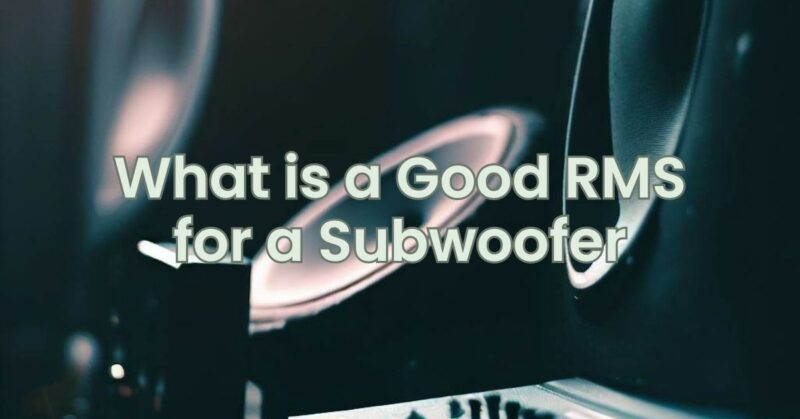When it comes to subwoofers, one crucial specification to consider is the RMS power rating. RMS, short for Root Mean Square, indicates the continuous power that a subwoofer can handle without distortion or damage. In this article, we will delve into the concept of RMS power and help you understand what constitutes a good RMS rating for subwoofers.
Understanding RMS Power for Subwoofers:
RMS power refers to the sustained power handling capability of a subwoofer. It represents the amount of power the subwoofer can handle over an extended period without compromising audio quality. RMS power is typically expressed in watts (W) and is a crucial factor in determining the subwoofer’s performance capabilities.
Determining an Ideal RMS Power Rating:
- Subwoofer Size and Type: The appropriate RMS power rating for a subwoofer largely depends on its size and type. Generally, larger subwoofers tend to have higher power handling capabilities and may require a higher RMS power rating to deliver optimal low-frequency performance. Similarly, different types of subwoofers, such as sealed, ported, or powered subwoofers, have varying power requirements.
- Desired Listening Level and Room Size: Consider your listening preferences and the size of the room where the subwoofer will be used. If you enjoy deep bass and listening at higher volume levels, a subwoofer with a higher RMS power rating may be necessary to ensure sufficient output and prevent distortion. Larger rooms may also benefit from subwoofers with higher power handling capabilities to fill the space with impactful bass.
- System Integration: It is crucial to ensure that the RMS power rating of the subwoofer is compatible with the amplifier or receiver driving it. Mismatched power levels can lead to distortion, clipping, or even damage to the subwoofer or the entire audio system. Ideally, the amplifier’s power output should closely match or slightly exceed the subwoofer’s RMS power rating for optimal performance and reliability.
- Musical Genre and Content: The type of music you listen to can influence the desired RMS power rating for your subwoofer. If you frequently enjoy bass-heavy genres like electronic, hip-hop, or rock, a subwoofer with a higher RMS power rating might be preferable to reproduce the low-end frequencies accurately and with impact. However, if your musical preferences lean towards more moderate bass content, a lower RMS power rating may suffice.
A good RMS power rating for a subwoofer depends on various factors, including subwoofer size, desired listening level, room size, and musical preferences. It is essential to choose a subwoofer with an RMS power rating that matches your specific needs and complements your audio system to ensure optimal low-frequency performance.
Remember, larger subwoofers generally have higher power handling capabilities, and ensuring compatibility between the subwoofer’s RMS power rating and the amplifier’s power output is crucial. By considering factors such as your listening preferences, the size of your room, and the type of music you enjoy, you can select a subwoofer with an appropriate RMS power rating that delivers impactful, distortion-free bass reproduction.
Ultimately, the goal is to achieve a well-integrated and balanced audio system, where the subwoofer can handle the necessary power levels, reproduce deep bass frequencies accurately, and enhance your overall listening experience.


